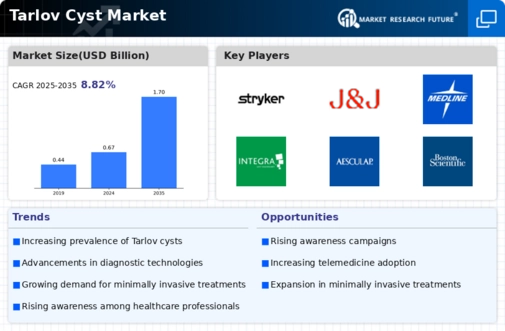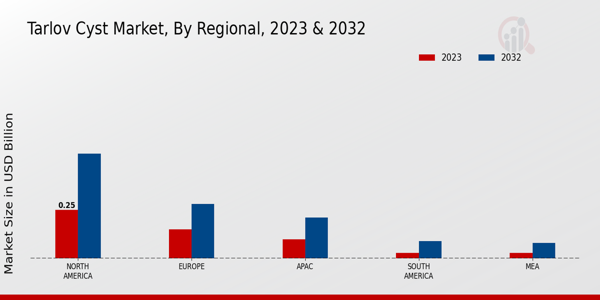Market Growth Projections
The Global Tarlov Cyst Market Industry is poised for substantial growth, with projections indicating a market value of 0.67 USD Billion in 2024 and an anticipated increase to 1.7 USD Billion by 2035. This growth trajectory suggests a compound annual growth rate of 8.82% from 2025 to 2035. Such figures reflect the increasing recognition of Tarlov cysts and the corresponding demand for effective diagnostic and treatment options. As the market evolves, stakeholders are likely to explore innovative solutions to address the challenges associated with Tarlov cysts.
Emerging Treatment Options
The development of new treatment modalities for Tarlov cysts is a crucial factor propelling the Global Tarlov Cyst Market Industry. Innovative therapies, including minimally invasive surgical techniques and targeted pharmacological interventions, are being explored to manage symptoms and improve patient outcomes. As these treatment options become more widely available, patients may experience reduced recovery times and improved quality of life. The introduction of such advancements is expected to stimulate market growth, as healthcare providers increasingly adopt these methods to address Tarlov cysts effectively.
Patient-Centric Healthcare Models
The shift towards patient-centric healthcare models is reshaping the Global Tarlov Cyst Market Industry. These models prioritize individualized care and shared decision-making, which may enhance patient engagement and satisfaction. As healthcare systems increasingly adopt these approaches, patients are likely to seek more information about their conditions, including Tarlov cysts. This trend may lead to higher demand for consultations and treatments, ultimately contributing to market expansion. The emphasis on personalized care aligns with the projected growth trajectory of the market, as it adapts to meet the evolving needs of patients.
Increasing Awareness of Tarlov Cysts
The growing awareness of Tarlov cysts among healthcare professionals and patients is a notable driver in the Global Tarlov Cyst Market Industry. Educational initiatives and patient advocacy groups are actively disseminating information regarding the symptoms and potential complications associated with Tarlov cysts. This heightened awareness may lead to earlier diagnosis and treatment, thereby increasing the demand for medical interventions. As awareness continues to rise, the market is projected to expand, with estimates suggesting a market value of 0.67 USD Billion in 2024, reflecting the increasing recognition of this condition.
Rising Incidence of Spinal Disorders
The increasing prevalence of spinal disorders, including herniated discs and degenerative disc disease, is likely to drive the Global Tarlov Cyst Market Industry. Tarlov cysts often coexist with other spinal conditions, and as the population ages, the incidence of these disorders is expected to rise. This correlation suggests that more individuals may be diagnosed with Tarlov cysts as they seek treatment for related spinal issues. Consequently, the market could witness a compound annual growth rate of 8.82% from 2025 to 2035, reflecting the growing need for effective management of spinal health.
Advancements in Diagnostic Techniques
Technological advancements in diagnostic imaging, such as MRI and CT scans, are significantly influencing the Global Tarlov Cyst Market Industry. These innovations facilitate the accurate identification of Tarlov cysts, which may have previously gone undiagnosed. Enhanced imaging techniques allow for better visualization of the cysts and their potential impact on surrounding structures. As diagnostic accuracy improves, more patients are likely to seek medical advice, leading to an increase in treatment options. This trend is expected to contribute to the market's growth, with projections indicating a value of 1.7 USD Billion by 2035.











